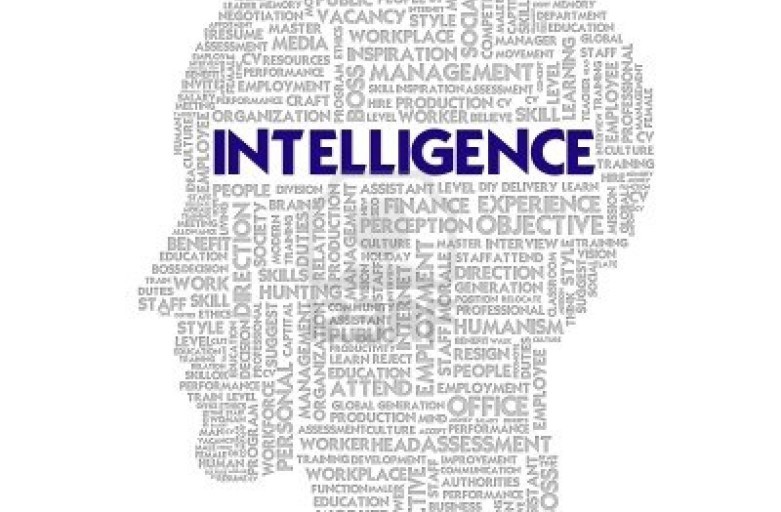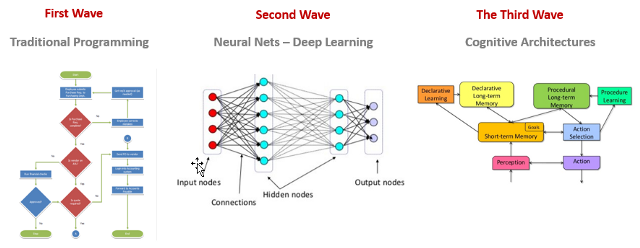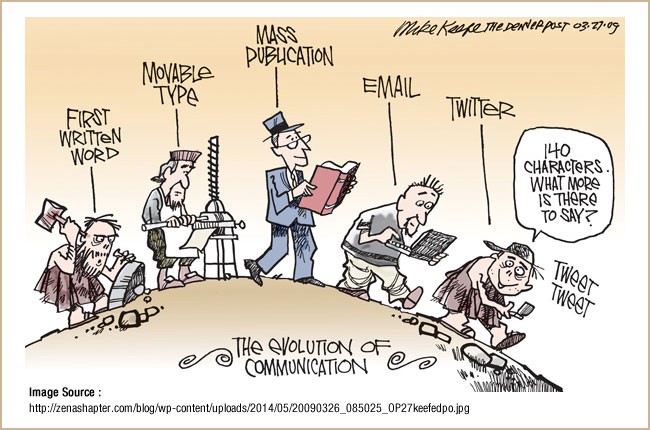A Brief History
The original vision of AI some 60 years ago was to build machines that can think, learn, and reason like humans. Initial optimism of achieving this in just a few years was grossly misplaced, and indeed continued to haunt AI for decades. As researchers failed to get anywhere near the flexibility and general cognitive ability of humans they turned their focus to solving very specific, narrow problems of ‘intelligence’ — And to this day ‘AI’ is practiced almost entirely this way. In fact, a good number of current AI researchers and developers typically aren’t even aware of the original meaning of AI!
A recent breakthrough in artificial intelligence called deep learning (DL) has been hailed as a major breakthrough— it changes the development dynamic from having to ‘program’ computers to ‘teaching’ them. This characterizing has some merit, but glosses over the significant human expertise and ‘tweaking’ required to make these systems work. Moreover, if anything, these systems are even narrower than previous approaches: Their range of capabilities is almost entirely determined by their training data, while traditional approaches can in principle allow for real-time adaptive learning.
Many contemporary AI systems are quite powerful, yet almost always highly specialized and rigid: Speech recognition systems trained on telephone input won’t do well on microphone dictation; image recognition trained for freeway driving can’t cope with urban roads; world champion Chess, Jeopardy!, and Go systems can’t play even basic Tic-Tac-Toe; and order taking chatbots can’t even remind you when your parking meter runs out; and so on…
Limitations of Narrow AI
The core problem of current AIs is not so much that they are narrow — specialization can be very helpful — but that they are inherently narrow (narrow by design), and that they are rigid, fixed. Both traditionally programmed as well as the newer, ‘trained’ AIs suffer the same basic limitation: whatever capabilities they have, are pretty much frozen in time.
It is true that narrow AI can be designed to allow for some limited learning or adaptation once deployed, but this is actually quite rare. Typically, in order to change or expand functionality requires either additional programming, or retraining (and testing) with a new dataset.
There are two distinct but related problems with this dynamic. Firstly, narrow AI systems cannot adapt dynamically to novel situations — be it new perceptual cues or situations; or new words, phrases, products, business rules, goals, responses, requirements, etc. However, in the real world things change all the time, and intelligence is by definition (see below) the ability to effectively deal with change!
The second and more important issue is that narrow AIs do not possess their own intelligence to be able to think, learn or solve problems — rather they embed the programmers solution to the (perceived) narrow problem that they are designed to solve. Such frozen intelligence really is no intelligence!
To summarize, we’ll need more than the contemporary approaches to achieve anything resembling human intelligence — current applications are extremely narrow in scope, and cannot use their current knowledge and skills to acquire skills in new domains. Also, they typically cannot learn directly from user interaction, have no memory and will make the same mistakes over and over again. Furthermore, they cannot reason or explain themselves, have very limited understanding and no common sense.
Not something one would call smart.

So, what is Intelligence?
Intelligence, in general, is the cognitive ability to understand the world; to help achieve a wide variety of goals; and to integrate new knowledge and skills in ongoing learning. It must operate in real time, in the real world, and with limited knowledge and time.
Moreover, human intelligence (as opposed to animal intelligence) is special in that it features the ability to form and use highly abstract concepts, and to think and reason using symbols — i.e. to handle natural language.
Artificial intelligence should be no different. Truly intelligent AI — often called Artificial General Intelligence (AGI) — must embody at least the following essential abilities:
- To autonomously and interactively acquire new knowledge and skills, in real time. This includes one-shot learning — i.e. learning something new from a single example.
- To truly understand language, have meaningful conversation, and be able to reason contextually, logically and abstractly. Moreover, it must be able to explain its conclusions!
- To remember recent events and interactions (short-term memory), and to understand the context and purpose of actions, including those of other actors (theory of mind).
- To proactively use existing knowledge and skills to accelerate learning (transfer learning).
- To generalize existing knowledge by forming abstractions and ontologies (knowledge hierarchies).
- To dynamically manage multiple, potentially conflicting goals and priorities, and to select the appropriate input stimuli and to focus on relevant tasks (focus and selection).
- To recognize and appropriately respond to human emotions (have EQ, emotional intelligence), as well as to take its own cognitive states — such as surprise, uncertainty or confusion — into account (introspection).
- Crucially, to be able to do all of the above with limited knowledge, computational power, and time. For example, when confronted with a new situation in the real world, one cannot afford to wait to re-train a massive neural network over several days on a specialized supercomputer.
In addition, there are strong arguments to be made that intelligence requires some kind of sensory- motor grounding in reality. Clearly, understanding the dynamics of the real world is crucial for being able to reason about human affairs. It requires a grasp of such characteristics as size, shape, and texture of objects, as well as temporal and spatial relationships. Abstract concepts must be ‘grounded’ in some way to underlying objects, changes, and movements in the world.
However, it may be possible to ‘simulate’ perception and action within a computer ‘brain’. Whether such shortcuts will be adequate for good common sense reasoning remains an open question.
How do we get to Real AI?
Achieving truly intelligent, general AI will require both engineering solutions as well as the right commercial dynamic.
On the technology side, we most likely need a fundamentally different approach — perhaps a ‘Third Wave of AI’.

A good case can be made that an approach called cognitive architectures can provide the framework to achieve real intelligence — though this is not yet a mainstream view.
Cognitive architectures approaches have a long history in AI. Essentially, it is the idea of having a core ‘cognitive engine’ that supports all the basic functionality required for general intelligence. It is a uniform, highly-integrated system of support structures and functions that, working together, produce all the cognitive abilities required for general intelligence. These include short- and long-term memory, pattern matching, prediction, prioritization, reasoning, planning, and many others.
There are several important advantages to this approach:
- Using only one engine for many different applications, instead of numerous disparate systems
- Having a large baseline of common knowledge and skills that can be applied to multiple domains
- The ability to learn and integrate new knowledge and skills instantaneously
- Easily, and almost instantaneously share knowledge and skills with other AGIs (as appropriate)
So much for the engineering side.
While it is becoming increasingly obvious that Narrow AI cannot provide all the intelligence and robustness we need, there are strong practical and commercial forces holding back development of AGI.
For one, narrow AI has several significant advantages: The designer can focus on just solving one concrete problem at a time; they can directly inject a lot of specific human knowledge into the system; and they can use any engineering technique appropriate for that particular application. In particular, they can ignore all limitations that may apply to other use cases.
Also, not having to figure out how to imbue the system with real intelligence, they can get to market faster — and from there, can incrementally improve the functionality of a given application. In fact, an often unspoken, but mistaken assumption is that we can get to from Narrow to General AI incrementally.
On the other hand, what discourages development of Artificial general intelligence is that it is much harder. It has to be inherently designed to function well over a large range of domains and dynamic situations— just like humans do. Furthermore, it has to be able to autonomously acquire knowledge and skills that may not have been anticipated at design time.
General AI must in principle be able to utilize strategies learned in Chess to improve business negotiations, or more reasonably, to use a text description to help it visually identify a new type of object, or to use information from a conversation to later solve a problem using logical reasoning.
Another key requirement is for the system to handle ambiguities and missing knowledge — it must know when it doesn’t know or understand something, and know how to remedy that. It must generally be robust in the face of limited knowledge and computational resources, and not fail catastrophically.
While the value, indeed the need, for these features is becoming increasingly clear, it is also obvious that developing AGI-ish designs will require a more visionary approach and considerable foresight. Again: Real AI is really hard!
What could catalyze AGI development?
Shortcomings of Narrow AI are perhaps most obvious in applications involving natural language understanding. Users of interactive language-based systems should reasonably expect them to be intelligent enough to hold productive, lengthy conversations; to remember and take into account what transpired earlier; to learn a user’s preferences and goals; and, most importantly, to interactively improve and extend their knowledge and skills, and to learn from their mistakes. We want our personal virtual assistants and chatbots to be more like ‘Her’, and less like ‘Dory’.
Human language is integral to our intelligence and to all of human achievement. Similarly, synthetic intelligence will require full natural language competence. While AI development focused on robotics alone (i.e. perception and dexterity) is also important, ultimately these systems will also need to be able to read and follow language instructions, and to be able to explain their decisions in natural language.
AGI-based designs will by definition, and by design, cover such advanced requirements. They will have deeper understanding, short- and long-term memory, reasoning ability, and a good amount of common sense. They will also be able to handle much more complex conversations.
Perhaps a combination of demonstrable progress with cognitive architectures, together with increasing demand for improved natural language systems will re-ignite, and hopefully realize, the original dream of AI — to have AI with their own intelligence, not just frozen bits of human ingenuity.

